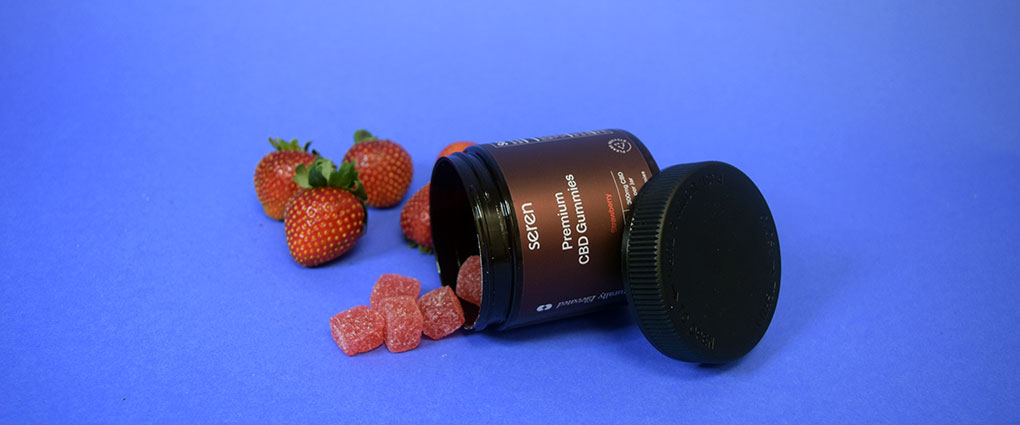Cannabis and its derived products have been the talk of the town lately. It has led to an increased number of google research about cannabis and its products. I’m sure you are also here for the same purpose. So, without any delay, let’s jump to the comparison of two important cannabinoids.
The plants of the Cannabis genus contain compounds known as cannabinoids. There are up to 113 different cannabinoids. Two of the most common and most discussed are Cannabidiol (CBD) and tetrahydrocannabinol or delta 9- tetrahydrocannabinol (THC).
What is CBD?
Cannabidiol is sourced from both marijuana and hemp plants. However, the one extracted from marijuana has more THC than the latter. The working principle of Cannabidiol as a natural muscle relaxant is very simple. It inhibits the release of secretions that tighten the muscles, causing spasms that are symptomatic of anxiety.
CBD is made from mother cells called CBG. They are building blocks of other cannabinoids as well. CBD and CBG are in equal quantity in a full spectrum blend, along with THC (less than 0.3%), terpenes, flavonoids, etc.
What is THC?
Delta 9-tetrahydrocannabinol is a psychoactive cannabinol. It is typically sourced from marijuana. THC works by triggering the production of dopamine in the body. If you don’t know about it already, dopamine is a hormone released from the brain regulating happiness and pleasure. THC does now that it overproduces dopamine, which creates a sense of euphoria.
CBD and THC are major or common cannabinoids. In addition to them, other cannabinoids are also present in the cannabis plant. These include cannabinol (CBN), cannabichromene (CBC) cannabidiolic acid (CBDA) etc.

CBD, THC, and the human Endocannabinoid system
Together these two cannabinoids affect the endocannabinoid system in the human body. It is an important physiologic system of the human body that consists of endocannabinoids and cannabinoid receptor proteins. In this system, endocannabinoids are the neurotransmitters, and the receptors are the proteins that are distributed throughout the central nervous system and peripheral nervous system.
A neurotransmitter transmits a message in the human body chemically. It is carried by a neuron and may stimulate another neuron, a gland, or an organ. This neuron, gland, or organ is called the receptor. Neurotransmitters regulate pain, appetite, mood, immunity, etc.
There are a lot of aspects in which CBD and THC differ from each other. Let us discuss them in detail for a better comparison of both.
Source of Extraction
Marijuana has a high THC concentration, up to 5 to 35%. So, it is the most common source of THC extraction. Its growth cycle is up to 60 to 90 days, and it does not grow under ordinary conditions. Its cultivation is a carefully controlled procedure.
On the other hand, CBD is extracted from hemp. Its growth cycle is 108 to 120 days. It grows under ordinary conditions, i.e., it has adaptive growth. The CBD extracted also has a very little concentration of THC (less than 0.3%)
Psychotic effect
THC levels higher than 0.3% are known to cause a high. It happens because THC causes a psychotic effect. The mechanism behind this effect is linked to chemicals such as dopamine, GABA, and Glutamate neurotransmission. However, the degree of psychotic effect varies with age, dosage, and intake of other drugs. CBD does not cause a psychotic effect as its THC concentration is less than 0.3%.
Chemical structure
CBD and THC are made up of the same number and type of atoms. i.e., both contain 21 carbon atoms, 30 hydrogen atoms, and two oxygen atoms. However, the arrangement of atoms is different in both.
The chemical structure of both compounds is similar to the endocannabinoids of the human body. CBD and THC mimic the action of endocannabinoids and bind to the receptors. As a result, they stimulate the release of dopamine and other chemical transmitters. The excessive production of dopamine etc. is responsible for the psychotic effects.
Legality
The legality of CBD and THC varies from state to state in the US. Initially, marijuana and THC were treated as controlled substances. But the 2020 drug reforms in almost 33 states of the US allowed medical practitioners to prescribe marijuana and products containing THC for medicinal purposes only. In several states, the use of cannabis for recreational purposes is legal.
In the US, hemp-derived products with less than 0.3% THC concentration are legal in the eyes of federal law, and it applies to all 50 states. However, CBD with more than 0.3% THC is still treated as a Schedule I drug by DEA(Drug Enforcement Administration) and FDA(Food and Drug Administration) under the Controlled Substances Act(CSA).
Since the legalities are different in every state, it is recommended to always research your state’s laws before buying any CBD or THC product or keeping any such drug in your possession. You might face penalties even on medicinal use in a state where cannabis products are not legal.
Remember to always keep a prescription with you if you use any cannabis product for medical purposes.

Benefits
Progressively, studies are being carried out on the benefits of CBD and THC. New spectrums in this field are also being discovered daily.
Benefits of CBD
According to research, CBD does not clinically treat any medical condition. It relaxes the body and helps it deal with the existing pathological conditions. Recent studies have revealed evidence of CBD being useful in relieving medical conditions such as depression, anxiety, PTSD, etc. However, this study is in the initial stages and is insufficient to make any claim in treatment.
Benefits of THC
Some studies show THC being beneficial in glaucoma, insomnia, and tremors. It might help relieve pain in arthritis and migraine. But again, THC is not a proven treatment for any disease. Studies are still in progress, so it would be early to make a health claim.
Side-Effects
Like benefits, CBD and THC have certain limitations to their use. Studies show that their use may lead to side effects such as drowsiness, lethargy, mood changes, etc. However, a lot of research is required to back up these studies, and till then, any authority cannot claim any sort regarding the health perspective of CBD and THC.

Forms of CBD intake
The most common and most used form of intaking marijuana-based products is smoking them up. However, several other safe forms exist for both compounds.
Available forms of CBD are:
- CBD Topicals
- CBD Capsules
- CBD Gummies
- Broad-Spectrum CBD Oils
Available forms of THC are:
- Oils
- Tinctures
- Edibles
- Capsules
- Vape products
When choosing the preferred intake form for CBD and THC, you must consider certain aspects. Topical forms, such as lotions and gels, have very limited benefits. Vaping is dangerous for health and may pose a risk of cancer. Edible products are more popular as ingestion maximizes the benefits of the compound.
It isn’t easy to find edible products with high quality and affordable prices. But thanks to Seren for getting it covered for you. At Seren, you can find top-notch CBD products in various forms and at amazingly affordable prices. So don’t wait anymore and visit them at https://seren-cbd.com/.
Drug testing
On drug testing, marijuana is easily detected as it contains THC, while CBD often goes undetected. The common toxicology lab equipment is not designed to read it. However, there is a condition in which consuming only CBD detects THC in a drug test. It happens when the CBD product you are using has more than 0.3% THC. Less than that is not detected. So, if this happens, you need to reconsider your choice of the CBD brand you are using.
Recently, many mislabeled CBD products have been discovered that mentioned a lesser amount of THC on labels but were tested to contain higher amounts. It has given rise to the mandatory lab testing of all CBD and THC products. If not mandatory, this testing is highly practiced among brands and highly demanded among the customers.
FDA regulations
FDA is currently working tirelessly to analyze cannabis and its related product. Extensive research has been the reason behind all the delays caused in issuing regulations. The topic of cannabis and its related products is being studied from various angles. The use of cannabinoids individually and in combination, effects of cannabinoids intake during pregnancy, and breastfeeding are the current hot topics.
In July 2021, FDA approved the use of CBD for the treatment of seizures in genetic disorders such as tuberous sclerosis complex (TSC) in patients one year of age and older. Previously, CBD was approved to treat epileptic episodes in patients of Lennox-Gastaut syndrome (LGS) and Dravet syndrome (DS).
In THC, the FDA does not regulate the use of delta-8 THC in products in place of delta-9 THC. Many manufacturers use delta-8 THC, which produces a greater high than the latter. It is highly intoxicating and is subjected to synthetic conversions during manufacturing.
However, FDA strictly advises keeping cannabis products out of reach of children and animals. The products come in attractive forms, such as gummies and brownies, so children are highly likely to consume them without supervision.
Take-home message
Before you try any cannabinoid, discuss it with your doctor. Make sure you inform your doctor about all your existing medical conditions and the medications you are taking. Cannabinoids can interfere with other drugs and pose serious health threats. Also, check for your state laws because using even a trace amount of THC in some states is illegal.